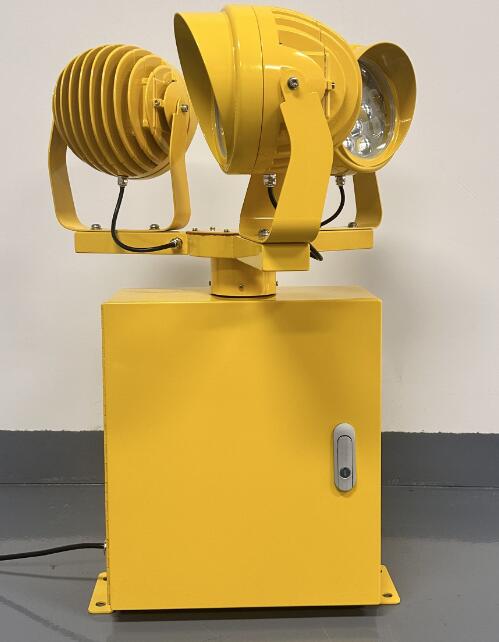In the world of aviation safety, few components are as visually distinctive and functionally critical as the airport beacon light. These powerful visual markers serve as aerial lighthouses, guiding pilots to safe landings while distinguishing airport locations from surrounding terrain. For those searching for an airport beacon light for sale, understanding the technical specifications, regulatory requirements, and modern innovations is essential to making an informed purchase decision that meets both safety standards and operational needs.
The Critical Role of Airport Beacon Lights
Modern airport beacon lights perform three vital functions:
Location Identification - Providing unmistakable visual reference points for pilots

Airport Classification - Using standardized color codes to indicate airport types
Obstruction Warning - Marking potential hazards in low-visibility conditions
These lights operate continuously during nighttime hours and in poor visibility, forming an integral part of a comprehensive airport lighting system that includes runway lights, approach lighting, and taxiway illumination.
Technical Specifications to Consider
When evaluating an airport beacon light for sale, several key technical factors demand attention:
Light Source Technology
Modern LED systems (50,000+ hour lifespan)
Traditional xenon strobe options
Hybrid systems combining multiple technologies
Optical Performance
Minimum intensity requirements (typically 20,000+ candela)
Beam distribution patterns
Flash characteristics (duration and frequency)
Structural Specifications
Wind resistance ratings
Corrosion protection standards
Weight and mounting requirements
Regulatory Compliance Essentials
All airport beacon lights must meet stringent international standards:
FAA Requirements (AC 150/5345-12E)
Specific intensity and flash rate mandates
| airport beacon light for sale |
Color specifications for various airport types
Durability and maintenance requirements
ICAO Standards (Annex 14)
Global harmonization of lighting characteristics
Visibility range requirements
Environmental considerations
Local Aviation Authority Rules
airport beacon light for sale
Country-specific adaptations
Special terrain or climate considerations
Additional certification requirements
Installation Best Practices
Proper installation ensures optimal performance:
Location Selection
Highest available point on airport property
Clear of obstructions in all directions
Accessible for maintenance
Mounting Considerations
Structural load calculations
Lightning protection systems
Vibration dampening
Electrical Requirements
Power supply specifications
Backup power connections
Surge protection
Maintenance Protocols
Regular maintenance preserves system reliability:
Preventive Maintenance Schedule
Monthly visual inspections
Quarterly electrical testing
Annual comprehensive checks
Common Maintenance Tasks
Lens cleaning and polishing
Electrical connection verification
Mechanical component lubrication
Performance Verification
Photometric testing
Flash timing measurements
Color consistency checks
Emerging Technological Advancements
The airport beacon light market continues to evolve:
Smart Beacon Systems
Remote monitoring capabilities
Predictive maintenance features
Automated fault reporting
Energy Efficiency Improvements
Advanced LED technologies
Solar-hybrid options
Power management systems
Enhanced Durability Features
Improved weather resistance
Vibration-resistant designs
Corrosion-proof materials
Purchasing Considerations
When selecting an airport beacon light for sale:
Supplier Evaluation
Manufacturer reputation
Certification documentation
After-sales support
Total Cost of Ownership
Energy consumption
Maintenance requirements
Expected service life
Compatibility Verification
Existing infrastructure integration
Future upgrade paths
Spare parts availability
Selecting the right airport beacon light for sale requires careful consideration of technical specifications, regulatory requirements, and operational needs. Modern systems offer significant advantages in reliability, efficiency, and maintenance requirements compared to traditional solutions. By understanding these critical factors and working with reputable suppliers, airport operators can ensure they acquire beacon lighting systems that provide years of reliable service while meeting all applicable safety standards. The proper selection and installation of these vital visual aids contribute significantly to overall aviation safety and operational efficiency.